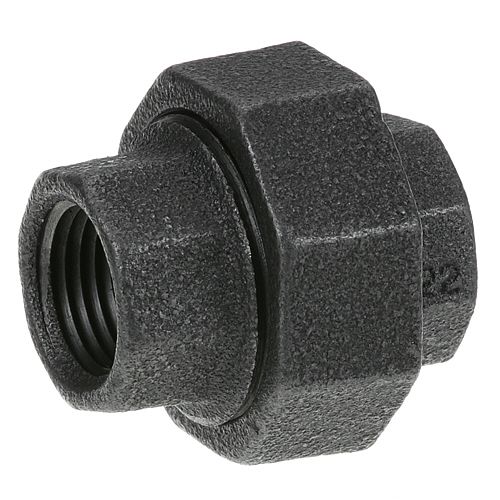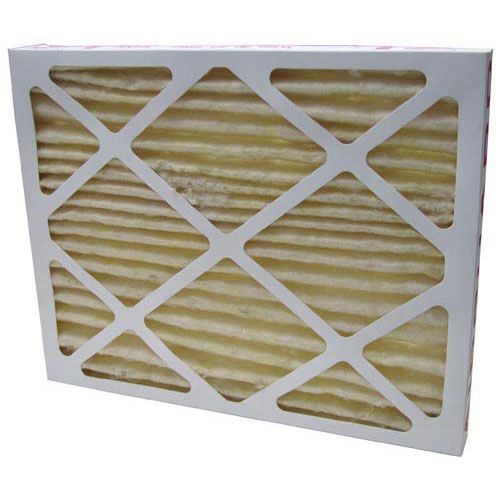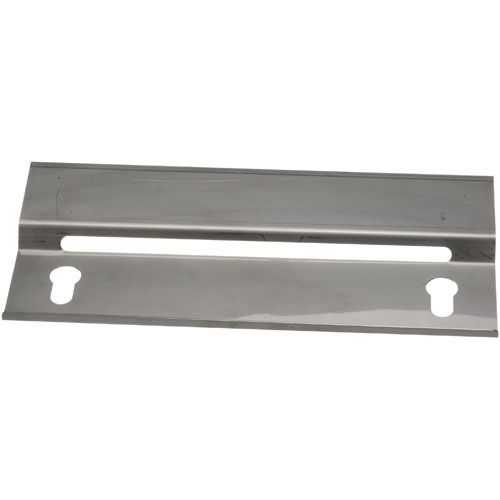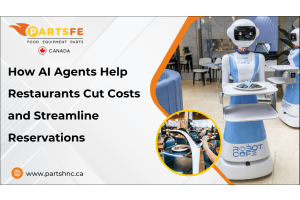Choosing the Best Commercial Deep Fryer: Comprehensive Guide
Whether you're running a fast-paced restaurant, a food truck, or a bustling cafeteria, a commercial deep fryer is often the backbone of a successful kitchen. French fries, chicken wings, onion rings, tempura, and countless other menu favorites rely on a deep fryer that performs consistently, heats quickly, and lasts through the dinner rush without fail.
But with so many options on the market—from countertop models to high-capacity floor fryers, gas to electric, and pressure fryers to open vats—it can be overwhelming to find the right one. This comprehensive guide breaks down everything you need to know to choose the best commercial deep fryer for your business.
Why choosing the right commercial deep fryer matters?
A commercial deep fryer is more than just a cooking appliance—it is a backbone of operations in kitchens that rely on consistent, high-volume frying. The right deep fryer can impact:
-
Cooking speed & efficiency: A powerful fryer can handle large batches quickly, helping meet peak-time demands.
-
Product consistency: Proper temperature recovery and uniform heating ensure consistent food quality.
-
Operational cost: Energy-efficient and easy-to-maintain models can significantly reduce utility and labor costs.
-
Safety & compliance: Commercial-grade equipment adheres to industry safety standards, reducing risks and liability.
In short, the correct fryer enhances productivity, ensures customer satisfaction, and improves profitability.
Distinguishing electric and gas deep fryers
Electric and gas deep fryers each have their own merits:
-
Electric deep fryers: These fryers are smaller, easier to use, and generally more affordable. They're favored for their simplicity and ease of cleaning.
-
Gas deep fryers: Larger and more powerful, gas fryers can handle larger quantities of food and are preferred for their precise temperature control, making them a favorite among professional chefs.
Selecting the ideal deep fryer for your kitchen
Consider these factors when choosing a deep fryer:
-
Capacity: Ensure the fryer can handle your expected volume of food. Countertop fryers suffice for smaller operations, while floor models are better for high-volume kitchens.
-
Temperature controls: Opt for fryers with accurate temperature control for consistent results.
-
Safety features: Look for features like automatic shut-off and over-temperature protection to ensure safe operation.
-
Ease of use: Choose fryers with user-friendly designs and easy-to-clean features.
-
Cost: Balance the initial cost with durability and performance to find a fryer that fits your budget and needs.
Best practices for deep fryer use
Follow these guidelines for safe and effective frying:
-
Oil amount: Use the right amount of oil to avoid burning or greasiness.
-
Oil type: Use oils with high smoke points for deep frying.
-
Temperature control: Maintain consistent temperatures for crispy, evenly cooked food.
-
Cooking times: Adjust cooking times based on food type and size.
-
Excess oil removal: Remove excess oil from food after frying to prevent greasiness.
-
Avoid splatters: Take precautions to prevent oil splatters, which can cause burns or fires.
Delicious deep-fryer recipes
|
Recipe |
Ingredients |
Instructions |
|
Classic french fries |
- Potatoes - Salt - Oil for frying |
|
|
Crispy fried chicken |
- Chicken pieces - Buttermilk - Spices - Flour - Oil for frying |
|
|
Fried cheese sticks |
- Mozzarella cheese - Flour - Eggs - Breadcrumbs - Marinara sauce for dipping |
|
|
Onion rings |
- Onions - Flour - Cornstarch - Spices - Oil for frying |
|
Cleaning and maintaining your commercial deep fryer
Daily cleaning routine:
After each use, wipe down the exterior of the fryer with a damp cloth to remove any oil splatters or food residue. Use a fryer brush to remove any crumbs or debris from the fryer basket and heating elements.
Weekly drain and scrub:
Allow the oil to cool completely, then drain it into a container for disposal or filtration. Once the oil is removed, scrub the interior of the fryer with a non-abrasive sponge and a degreasing cleaner to remove built-up residue.
Boil-out procedure:
Perform a boil-out procedure regularly to deep clean the fryer. Fill the fryer with water and a dedicated fryer boil-out product, then bring it to a boil. After boiling for a set period, drain the water and thoroughly rinse the fryer to eliminate any traces of the cleaning solution.
Filter replacement and oil management:
Replace the fryer oil filtration system's filters according to the manufacturer's recommendations to maintain oil quality. Monitor the oil level and quality regularly, and change the oil as needed to prevent rancidity and ensure the quality of fried foods.
Component inspection:
Regularly inspect the fryer's components, such as the heating elements, thermostat, and safety features, to ensure they are functioning properly. Any signs of wear or damage should prompt immediate maintenance or replacement.
Ventilation and surrounding area:
Clean and maintain the fryer's ventilation system to ensure proper airflow and prevent the accumulation of grease. Keep the area around the fryer clean and free from clutter to mitigate fire hazards and maintain a safe working environment.
Scheduled professional maintenance:
Consider establishing a schedule for professional maintenance to inspect and service the fryer at regular intervals. Professional maintenance can address issues that may not be apparent during routine cleaning and help extend the lifespan of the equipment.
Troubleshooting common deep fryer issues
When it comes to troubleshooting common deep fryer issues, there are several key areas to consider.
Oil temperature fluctuation: Check the thermostat for accuracy and ensure it is properly calibrated. Clean the temperature probe and verify that it is correctly positioned within the fryer.
Slow cooking or uneven browning: Clean or replace the heating elements to ensure consistent heat distribution. Avoid overcrowding the fryer basket, as it can lead to uneven cooking.
Oil quality and maintenance: Regularly filter and change the oil according to the manufacturer's recommendations. Monitor the oil level and avoid overfilling, which can cause oil spillovers and safety hazards.
Unusual odors or flavors: Thoroughly clean the fryer and replace the oil, as residual food particles can impart unwanted flavors. Inspect and clean the fryer's components, including the heating elements and basket, to eliminate any sources of odor.
Smoke or excessive fumes: Ensure that the fryer is positioned away from flammable materials and has proper ventilation. Check for any oil spills or debris around the heating elements that may be causing smoke.
Electrical malfunctions: Inspect the power cord and plug for any signs of damage, and replace them if necessary. If the fryer has a reset button, attempt to reset the unit to troubleshoot electrical issues.
When choosing the best commercial deep fryer, consider capacity, energy economy, durability, and safety features. Businesses can make informed decisions based on the detailed guidance provided, tailored to their specific needs and preferences. Investing in a high-quality industrial deep fryer not only ensures effective frying operations but also helps the food service establishment's overall performance and profitability. Businesses can enjoy continuous performance and reliability from their selected deep fryer for many years if they maintain it properly and follow safety standards.
FAQs
What variables should I consider while selecting a commercial deep fryer?
Consider fryer capacity, energy economy, longevity, safety features, and simplicity of cleaning and maintenance.
What type of fryer is ideal for high-volume frying in a commercial kitchen?
For high-volume frying, consider a gas fryer with several fry baskets or a large-capacity electric fryer with quick heat recovery.
Can a commercial deep fryer be used to fry a variety of foods?
Yes, most commercial deep fryers are multifunctional and can cook a variety of things, such as chicken, fish, fries, and snacks.











